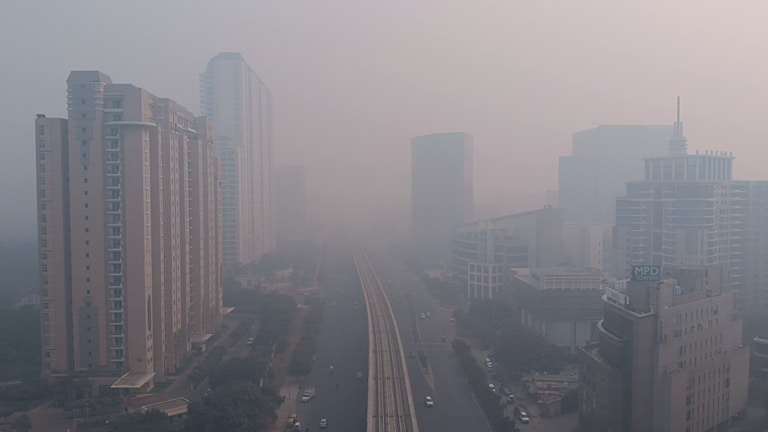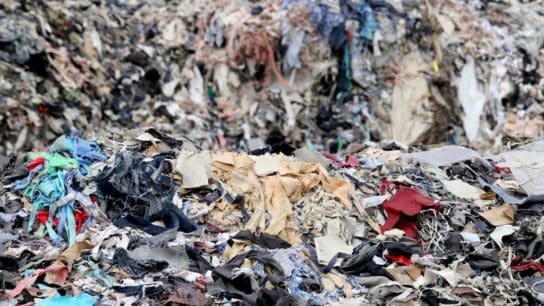For children in particular, air pollution can lead to serious complications, as their bodies are still developing. Research has linked it to asthma and other respiratory diseases, childhood cancer, and premature death, and found it affects neurodevelopment and cognitive ability.
—
More than 100 children under five years of age die every day across East Asia and the Pacific because of air pollution, a new analysis by a UN agency has revealed.
“Every breath matters, but for too many children every breath can bring harm,” said June Kunugi, UNICEF Regional Director for East Asia and the Pacific. The agency found that all 500 million children living in the region are exposed to unhealthy levels of air pollution. Of them, 235 million live in countries where average annual particulate matter (PM2.5) levels exceed levels deemed safe by the World Health Organization (WHO) by more than five times.
The WHO updated its air quality guidelines in 2021, setting the 24-hour PM2.5 safe limit at 15 μg/m3 and the annual threshold at 5 μg/m3. PM2.5, which generates from the burning of fossil fuel, biomass fuel, and agriculture waste, is the most commonly used unit in air quality measurements. It refers to an atmospheric particulate matter that has a diameter of less than 2.5 micrometers (or about 3% of the diameter of a human hair) and is said to pose the greatest risk to human health and also generate the greenhouse gases driving climate change.
| Pollutant | 2021 AQGs |
| Fine particulate matter, µg/m3 | Annual: 5 24-hour: 15 |
| Ozone, µg/m3 | 8-hour: 100 |
| Nitrogen dioxide, µg/m3 | Annual: 25 24-hour: 40 |
For children in particular, air pollution can lead to serious complications, as their bodies are still developing. Research has linked it to asthma and other respiratory diseases, childhood cancer, and premature death, and found it affects neurodevelopment and cognitive ability.
Household Air Pollution
Of all air pollution-related deaths in children under five in East Asia and the Pacific, indoor air pollution is responsible for more than half, UNICEF said last week.
Household air pollution derives from the burning of unclean fuels and solid fuel stoves for cooking and heating, which releases dangerous pollutants like nitrogen oxides, carbon monoxides and particulate matter.
This type of air pollution is linked to inequality and poverty, with roughly three billion people using unclean sources of fuels across the poorest nations in the world across Africa, Latin American and Southeast Asian countries.
Women and girls are disproportionately affected due to them spending larger time indoors. According to a 2016 WHO analysis, girls in households that depend on unclean fuels lose around 20 hours each week gathering wood or water; this means that they are at a disadvantage, both in comparison to households that have access to clean fuels, as well as to their male counterparts.
You might also like: Climate Change-Driven Extreme Weather Led to 43m Child Displacements in Past Six Years, UNICEF Says
Nowhere Is Safe
Air pollution is the second leading cause of death worldwide after high-blood pressure and tobacco, killing some 8.1 million people every year. While less than 1% of the world’s population is exposed to PM2.5 below the safe threshold of 5 μg/m3, the issue is particularly problematic in poorer areas of the world.

According to a 2023 study, people living in four South Asian nations – Bangladesh, India, Nepal, and Pakistan – are expected to lose about five years of their lives on average because of air pollution. People living in Sub-Saharan Africa and South Asia are significantly more likely to die from outdoor air pollution, with death rates approximately 100 times greater than in Europe and North America.
The study blamed a series of factors, including a lack of adequate infrastructure and funding for the high levels of pollution in some countries. Most countries in Asia and Africa, which together contribute about 92.7% of life years lost globally due to air pollution, lack key air quality standards needed to develop adequate policies. Moreover, just 6.8% and 3.7% of governments in the two continents, respectively, provide their citizens with fully open-air quality data.
Globally, PM2.5 causes the average person to lose approximately 2.3 years of life expectancy – or a combined 17.8 billion years.
Featured image: Aulia Erlangga/CIFOR via Flickr.
This story is funded by readers like you
Our non-profit newsroom provides climate coverage free of charge and advertising. Your one-off or monthly donations play a crucial role in supporting our operations, expanding our reach, and maintaining our editorial independence.
About EO | Mission Statement | Impact & Reach | Write for us














